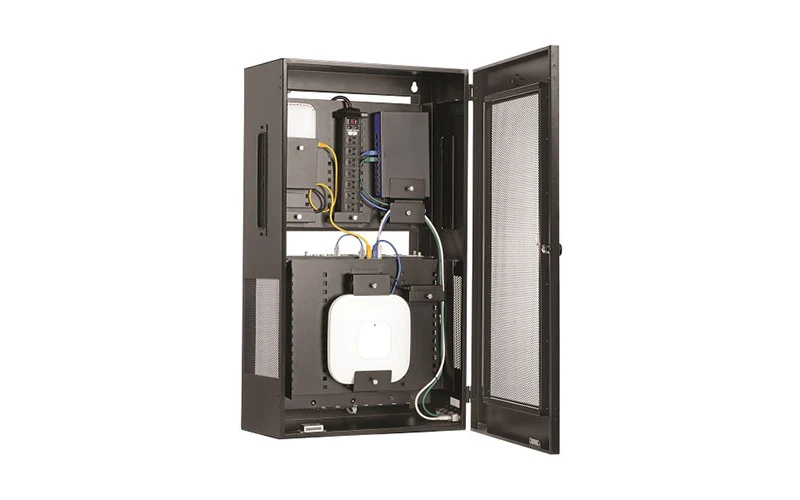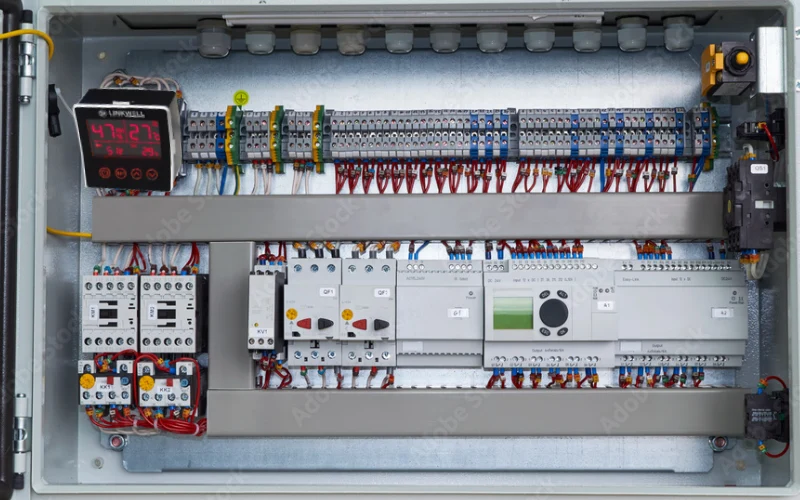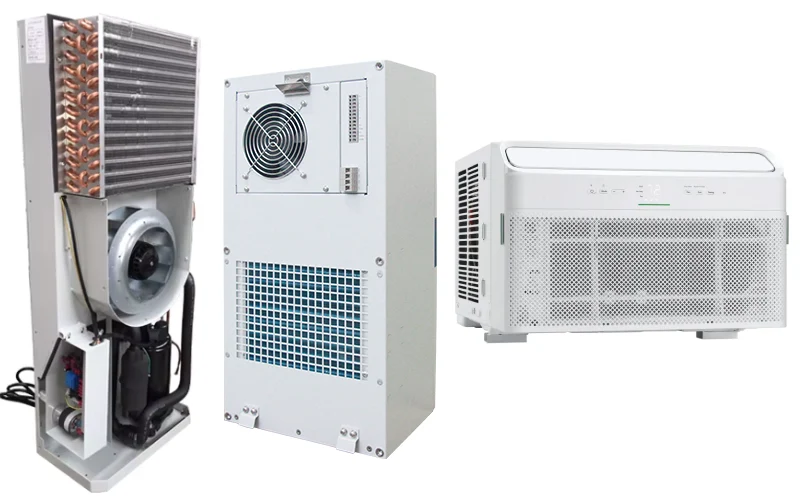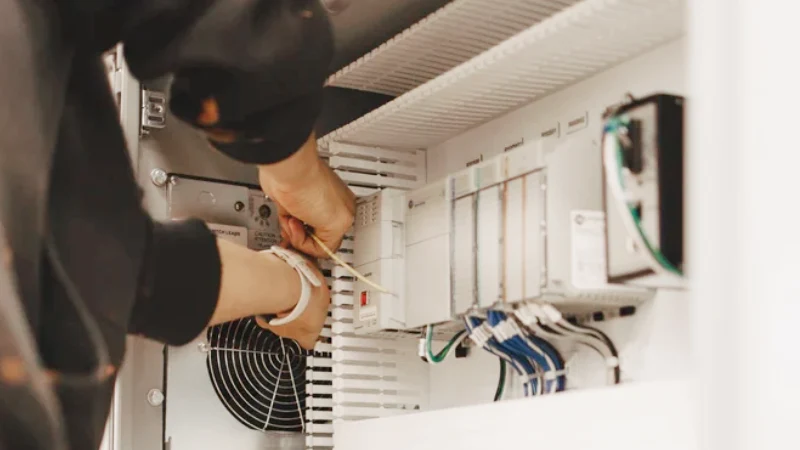So, what is a server cabinet? You can think of it as a sturdy, organized home for your servers and network gear in data centers or network rooms. When you ask, “what is a server cabinet,” you get a simple answer: it’s a secure enclosure that holds and protects your vital IT equipment. In busy data center environments, these cabinets keep everything tidy and safe.
You’ll notice that server cabinets help boost airflow, improve cooling, and make maintenance easier. With the right setup, you save space, cut down on downtime, and make your data center more efficient. That’s why server cabinets matter so much in data centers—they keep your servers running smoothly and your operations on track.

Key Takeaways
- A server cabinet is a secure, enclosed space that protects and organizes servers and network equipment.
- Good server cabinets improve cooling, airflow, and cable management to keep servers running smoothly.
- Server cabinets offer strong security with lockable doors and advanced access controls to prevent unauthorized access.
- Choosing the right size and features helps your data center stay efficient, organized, and ready to grow.
- Server cabinets provide better protection and noise control than open server racks, making them essential for many environments.
What is a Server Cabinet

Server Rack Cabinet Overview
You might wonder, what is a server cabinet and how does it fit into your IT setup. A server rack cabinet is a fully enclosed structure designed to hold servers and other critical equipment. You get lockable doors, side panels, and a roof, which means your hardware stays safe from dust, tampering, and accidental bumps. In contrast, a server rack is usually an open frame. You see all the equipment, and airflow moves freely, but there’s less protection.
A server rack cabinet stands out because it gives you physical security and better airflow management. You can control who accesses your servers, and you can keep the temperature steady with built-in cooling systems. Most server rack cabinets follow the EIA-310 standard, so you know your equipment will fit. You’ll find these cabinets in data centers, network rooms, and even small offices. They help you organize your servers, switches, and storage devices in one neat space.
Here’s a quick comparison to help you see the difference:
- A server rack cabinet is enclosed, with doors and panels for security.
- A server rack is open, with easy access but less protection.
- Both hold servers, but cabinets offer better airflow control and physical security.
Industry standards like EIA-310E make sure your server rack cabinet matches the size and mounting needs of your equipment. Certifications such as UL2416 and RoHS show that your cabinet meets safety and environmental rules. You can trust that your data cabinet will protect your investment.
If you look at the most common dimensions, you’ll see that server rack cabinets come in different heights, widths, and depths. Here’s a table to show you the typical sizes:
| Dimension/Feature | Common Values/Standards | Description/Notes |
|---|---|---|
| Height | 42U, 48U, 22U–27U, 60U+ | Measured in rack units (1U = 1.75 inches). 42U is most common in data centers. |
| Width (Interior) | 19 inches | Standard inside width per EIA-310 standard for mounting equipment. |
| Width (Exterior) | 24 inches (common), 29.5″, 31.5″ | Exterior width allows space for cable management and airflow; 24″ fits raised floor tiles. |
| Depth | 24″, 36″, 42″, 48″, 59″ | Depth affects equipment fit, cable space, and airflow; deeper racks suit high-density setups. |
| Rack Types | 2-post, 4-post | 2-post for lightweight/network gear; 4-post for heavier servers and full enclosures. |
| Power Density | 2.4kW (2011 avg) to 8kW+ (modern), up to 40kW in high-density | Influences rack size and cooling needs. |

When you choose a server rack cabinet, you need to think about the factors to consider when choosing a server rack cabinet. You want the right size, material, and cooling options for your data center or office.
Linkwell stands out as a global leader in cabinet components and solutions. You get high-quality server rack cabinets that meet international standards. Linkwell offers customization, fast delivery, and 24/7 support. You can rely on their products in over 100 countries, just like major brands such as Siemens, ABB, and Schneider Electric.
Key Features
You want your server rack cabinet to do more than just hold servers. The best cabinets offer features that protect your equipment, make maintenance easier, and keep your data center running smoothly. Here are the key features you should look for:
- Effective cooling and ventilation systems. You get perforated doors, built-in fans, and ventilation slots to prevent overheating and extend the life of your servers.
- Secure housing. Lockable doors and side panels keep your hardware safe from unauthorized access.
- Expandability and scalability. Adjustable mounting rails and removable panels let you customize your server rack cabinet and add new equipment as your needs grow.
- Easy accessibility and maintenance. Outward-opening doors and removable side panels make it simple to reach your servers for upgrades or repairs.
- Compatibility with different types of server rack cabinets. You can mount servers, switches, storage devices, and PDUs in one cabinet.
- Cost-effectiveness. A good server rack cabinet balances your budget with long-term protection against hardware failure and overheating.
- Proper cable management. Organized cabling improves airflow and reduces the risk of damage. Linkwell’s cable management solutions help you keep everything neat and easy to maintain.
You’ll also find features like sliding rails, cable management bars, and lockable enclosed cabinets. These make maintenance quick and keep your servers safe. Cabinets that follow EIA standards for 19-inch racks work with all major brands, so you don’t have to worry about compatibility.
High-quality server rack cabinets use strong materials like SPCC cold-rolled steel or aluminum alloys. You get durable powder-coat finishes that resist scratches and corrosion. Cabinets with high static load capacity and precise manufacturing tolerances prevent warping and keep your servers secure.
Modern server rack cabinets include smart cooling features. You get high-perforation doors, integrated fan trays, and blanking panels for better airflow. Some cabinets are ready for future cooling technologies, like liquid cooling manifolds and rear-door heat exchangers.
Security matters too. Look for multi-point locking mechanisms, intelligent access control, and tamper-evident designs. These features protect your servers from physical breaches.
Recent advancements in server rack cabinet design make your life easier. You get modular designs for space optimization, smart PDUs for remote monitoring, and tool-less assembly for quick setup. Cabinets now include sensors and IoT capabilities managed by AI. You can monitor temperature, humidity, airflow, and power consumption in real time. This helps you prevent problems before they happen and manage your data center from anywhere.
Linkwell matches global leaders in certifications, customization, and support. You get energy-saving designs, high protection ratings, and easy maintenance. Linkwell’s partnerships with top brands mean you get reliable server rack cabinets for any data center or network room.
Tip: When you set up your server rack cabinet, check for features like adjustable rails, cable management, and cooling options. These make your data cabinet easier to use and help your servers last longer.
Main Functions of Server Racks
Equipment Housing
You need a place to keep all your servers, switches, and storage devices organized. Server racks give you a standardized way to house your IT equipment. You can stack multiple servers in one data cabinet, saving space and making everything look neat. With server racks, you avoid clutter and make sure every server has its own spot. This setup helps you find and replace equipment quickly. Linkwell’s outdoor enclosure is perfect if you need to protect your server gear in tough environments, like outside or in dusty areas.
- Organize and house servers, network devices, and storage systems in one secure location.
- Use standardized sizes so your equipment fits perfectly.
- Save floor space by stacking servers vertically.
Security and Protection
Keeping your servers safe is a top priority. Server racks come with lockable doors and panels, so only authorized people can access your equipment. Some server racks even offer advanced security, like biometric locks or access cards. This means you can control who touches your servers and when. You also get protection from dust, accidental bumps, and tampering. Linkwell’s data cabinet solutions include strong locks and sturdy panels to keep your servers secure.
- Lockable doors and panels prevent unauthorized access.
- Physical barriers protect servers from damage and theft.
- Advanced options like biometric locks add extra security.
Cooling and Airflow
Servers generate a lot of heat. If you don’t manage the temperature, your equipment can overheat and fail. Server racks help with cooling by using perforated doors, built-in fans, and airflow guides. You can add Linkwell’s cabinet air conditioner for even better temperature control, especially in high-density setups. Good airflow keeps your servers running smoothly and extends their lifespan.
- Perforated doors and fan trays improve airflow.
- Cabinet air conditioners maintain the right temperature.
- Proper cooling prevents overheating and hardware failure.
Cable Management by Linkwell
Messy cables can cause big problems. Server racks with good cable management keep everything tidy and easy to maintain. Linkwell’s rack cable management system uses vertical and horizontal panels, cable rings, and labeling to organize power and data cables. This setup makes troubleshooting faster and reduces downtime. You also get better airflow because cables don’t block the vents.
- Dedicated cable pathways prevent tangling and clutter.
- Customizable options fit your server rack perfectly.
- Organized cables make maintenance and upgrades easier.
Accessibility
You want to reach your servers quickly for upgrades or repairs. Server racks make this simple with removable panels, front and rear doors, and adjustable rails. Linkwell’s enclosure light helps you see inside the data cabinet, even in dark rooms. Easy access means you spend less time on maintenance and more time keeping your network running.
- Removable panels and doors give you quick access to servers.
- Adjustable rails let you install or move equipment easily.
- Built-in lighting improves visibility during maintenance.
Tip: When you choose a server rack, look for features that match your needs—security, cooling, cable management, and easy access. The right server rack makes your job easier and keeps your servers safe.
Server Racks vs. Server Cabinets
Differences
When you look at server racks and server cabinets, you’ll notice some big differences. A server rack is an open frame with vertical rails. You can see all your servers and network gear right away. This open design gives you the best natural airflow, which helps keep your equipment cool. You also get easy access for quick maintenance or upgrades. But, you don’t get much security or protection from dust and noise.
A server cabinet, on the other hand, is fully enclosed. It has lockable doors, side panels, and sometimes a roof. This setup keeps your servers safe from unauthorized access, dust, and even noise. You get better cable management and can add cooling systems like fans or air conditioners. Maintenance takes a bit longer because you need to open doors or remove panels.
Here’s a quick table to help you compare:
| Feature | Server Rack (Open-Frame) | Server Cabinet (Enclosed) |
|---|---|---|
| Structure | Open frame, no doors or panels | Fully enclosed, lockable doors |
| Airflow | Maximum natural airflow | Controlled airflow, needs cooling |
| Security | Minimal | High, lockable |
| Maintenance | Very easy | Takes more time |
| Protection | Exposed to dust and noise | Shields from dust, noise, and bumps |
| Cost | More affordable | Higher due to added features |
Note: Server racks give you speed and airflow, while server cabinets offer security and protection.
Use Cases
You might wonder which setup fits your environment best. If you run a dynamic data center or need frequent access to your servers, a server rack is a great choice. The open design lets you swap out equipment fast and keeps everything cool. This works well in spaces where you control the environment and don’t worry much about dust or security.
If you need to protect your servers from dust, moisture, or unauthorized access, go with a server cabinet. Cabinets shine in industrial settings, high-security data centers, or places with lots of foot traffic. You get better cable management, noise reduction, and the option to add cooling systems. Linkwell offers both types of solutions. Their rack-mount air conditioners fit open racks, while their closed-loop cooling systems and filter fans work perfectly in enclosed cabinets. You can find the right fit for any network rack or server setup.
- Use server racks for:
- High-performance environments needing airflow
- Quick maintenance and easy access
- Budget-friendly setups
- Use server cabinets for:
- Secure or sensitive data centers
- Industrial or dusty locations
- Spaces needing noise control and advanced cooling
Choosing between server racks vs. server cabinets depends on your needs for security, cooling, and access. With Linkwell’s flexible products, you can build the perfect network rack or server environment for your business.
Why Server Cabinets Are Essential
Protection and Reliability
You want your server to stay safe and run without problems. Server cabinets give you strong protection against dust, bumps, and unauthorized access. The enclosed design keeps your server hardware secure, even in busy data centers or shared spaces. You get lockable doors, reinforced steel frames, and tamper-proof hinges. These features stop intruders and keep your equipment safe.
Server cabinets also help your server work reliably. You avoid downtime because the cabinet shields your server from environmental stress. Advanced access controls like RFID card readers and biometric locks let only trusted people touch your server. Soundproofing materials and vibration resistance protect your server from damage. You get cable management systems that organize wires, improve airflow, and prevent overheating. This setup keeps your server running smoothly and helps you avoid costly repairs.
Linkwell’s server cabinets use shatterproof glass doors and modular designs. You get easy maintenance with removable panels and swing-out racks. Intelligent power management systems, such as smart PDUs and UPS compartments, make sure your server stays online even when power fluctuates. You can trust Linkwell’s global reputation for quality and reliability.
- Lockable doors and reinforced frames protect your server from theft and tampering.
- Cable management keeps wires neat, improves ventilation, and prevents overheating.
- Advanced access controls create audit trails for compliance and security.
- Noise reduction and vibration resistance extend your server’s lifespan.
Tip: Choose server cabinets with strong locks and smart cable management to keep your server safe and reliable.
Efficiency and Organization
You want your data center to run efficiently. Server cabinets help you organize your server, switches, and storage devices in one place. You get vertical stacking, which saves floor space and makes your data center look clean. Systematic arrangement of your server hardware reduces clutter and speeds up troubleshooting.
Server cabinets support air segregation strategies like Hot Aisle and Cold Aisle Containment. This setup optimizes cooling and keeps your server from overheating. Perforated doors and optional cooling accessories, such as cabinet air conditioners, help manage airflow. You get easier maintenance with sliding rails and shelves. You can reach your server quickly for upgrades or repairs.
Linkwell’s server cabinets come with organized cable management solutions. You get horizontal and vertical cable managers, cable ties, and labeling systems. These features hide and protect cables, reduce clutter, and improve the appearance of your data center. Lockable doors restrict access, protecting sensitive data and equipment.
Here’s a quick table showing how server cabinets boost efficiency and organization:
| Benefit | How Server Cabinets Help |
|---|---|
| Improved Organization | Systematic arrangement of server gear |
| Enhanced Cooling | Better airflow and temperature control |
| Space Utilization | Vertical stacking saves floor space |
| Easier Maintenance | Quick access with sliding rails |
| Superior Cable Management | Organized and protected wiring |
Note: Organized server cabinets make your data center easier to manage and help your server last longer.
Scalability
Your business grows, and your server needs change. Server cabinets make it easy to expand your data center. You get modular designs that let you add more server hardware, storage devices, and networking components without disrupting your setup. Adjustable shelves and rails fit different server sizes, so you can upgrade or expand anytime.
Server cabinets provide a solid foundation for future growth. You can integrate new hardware and technologies smoothly. Efficient cable management supports scaling operations and keeps your server organized. You avoid major overhauls or downtime because server cabinets adapt to your needs.
Linkwell’s server cabinets offer flexible options for expansion. You get customizable dimensions, material choices, and integrated accessories. These features help you build a scalable data center that supports your business goals.
- Modular design allows easy expansion and upgrades.
- Adjustable shelves and rails fit various server sizes.
- Organized cable management supports smooth scaling.
- Customizable options let you tailor your data center for future growth.
Tip: Pick server cabinets with modular features and adjustable rails to make scaling your data center simple and cost-effective.
Compliance
You need your server to meet industry standards and pass inspections. Server cabinets help you comply with safety and regulatory requirements. They undergo mechanical and electrical safety tests, such as steady force, accessibility, sharp edge, and stability testing. These tests ensure your server cabinet is safe and stable.
Server cabinets support compliance with standards like PCI-DSS, HIPAA, SOC 2, UL2416, RoHS, and EIA-310E. You get cabinet-level access control, role-based permissions, and audit trails. Features like lock monitoring, power redundancy, and real-time alerts help you meet uptime and security mandates.
Linkwell’s server cabinets hold UL Listed Enclosure certifications, including UL 50 and UL 508A. These certifications show compliance with North American regulatory requirements. You get full documentation and support for customized UL Listed Enclosures. Linkwell’s certifications ensure durability, safety, and regulatory compliance for your server cabinet.
- Locking mechanisms and tamper-evident seals prevent unauthorized access.
- Clear labeling and compliance certifications support audits.
- Cable management with sealed cable glands maintains environmental protection.
- Adequate space and ventilation help you meet operational and safety standards.
You’ve seen how a server cabinet keeps your server equipment organized, protected, and cool. Server cabinets help you manage cables, improve airflow, and boost security. They support your server’s long-term reliability and make scaling easy. Check out this quick comparison:
| Feature | Server Cabinet Benefits |
|---|---|
| Organization | Keeps server gear tidy |
| Protection | Shields from dust and damage |
| Cooling | Prevents server overheating |
| Scalability | Adapts as your server grows |
Server cabinets are essential for any IT setup. If you want a server solution that’s reliable and ready for the future, Linkwell has you covered.
FAQ
What is the difference between a server rack and a server cabinet?
You get more protection with a server cabinet because it’s enclosed. A server rack is open, so it’s easier to access your equipment. Cabinets help with security and dust control, while racks focus on airflow and quick access.
How do I choose the right size server cabinet?
First, check the size of your equipment. Measure the height, width, and depth. Think about future growth. Pick a cabinet that fits your current gear and leaves space for upgrades. Always allow room for airflow and cable management.
Why is cable management important in server cabinets?
Good cable management keeps your setup neat. It improves airflow and makes maintenance easier. You can spot problems faster and avoid tangled wires. Organized cables also help prevent accidental disconnections and damage.
Do I need cooling accessories for my server cabinet?
If your equipment generates heat, you should add cooling accessories. Fans, air conditioners, or vented doors help keep temperatures down. This protects your servers from overheating and extends their lifespan.
Can I install lighting inside my server cabinet?
Yes, you can. Adding enclosure lights helps you see inside the cabinet during maintenance. It makes your work easier and safer, especially in dark rooms or tight spaces.
What is the difference between Server Cabinet and network switch cabinet?
The main difference between a server cabinet and a network switch cabinet lies in their purpose and equipment support. A server cabinet is designed to house full-sized servers, offering more depth, higher load capacity, and better airflow management. In contrast, a network switch cabinet is typically shallower and optimized for networking devices such as switches, patch panels, and routers.
Server cabinets often include stronger cooling systems and cable management for heavy data loads, while network switch cabinets focus on organizing network connections efficiently.
Conclusion
A Server Cabinet is essential for businesses managing IT infrastructure. It protects and organizes servers, networking devices, and cables for safety, performance, and easy maintenance. As an experienced manufacturer, we offer custom server cabinet solutions for data centers, telecom, and enterprise use, helping you reduce downtime and maximize space efficiency. Contact us today to discuss your requirements.




